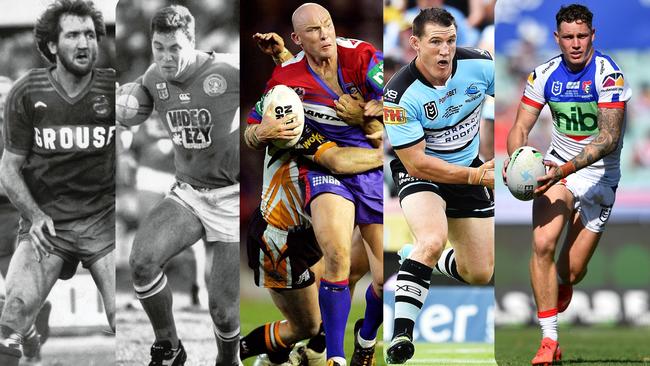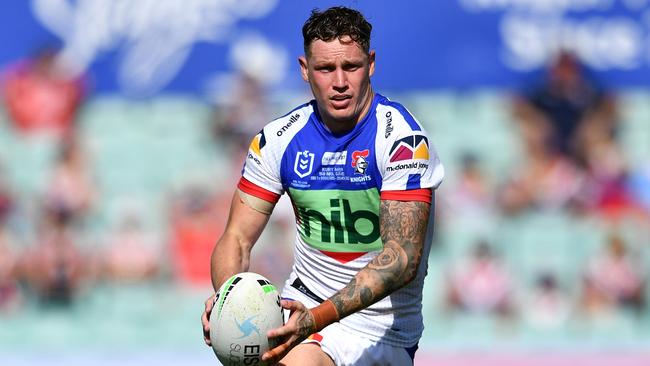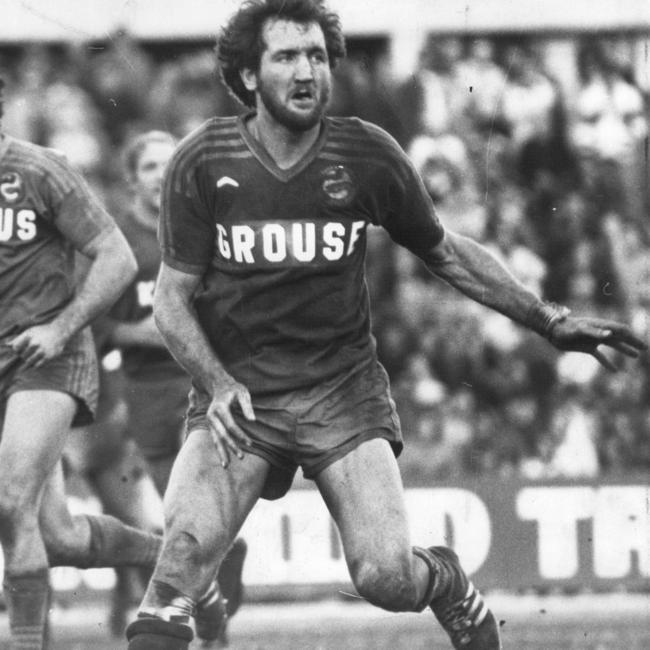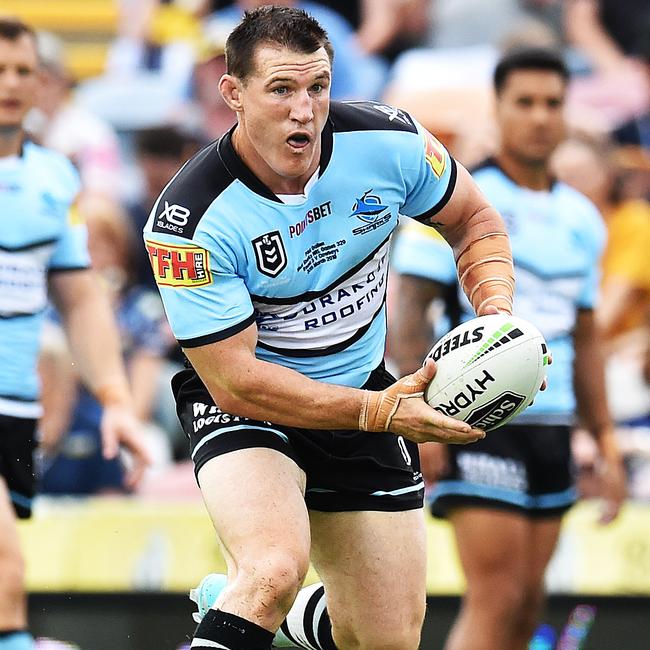NRL 2022: Kurt Mann is the modern man in the middle of the rugby league field
The No.13 role has changed more significantly than any other position in recent years. We take an historical look at the position and speak with Kurt Mann and Josh Jackson.

NRL
Don't miss out on the headlines from NRL. Followed categories will be added to My News.
Kurt Mann never envisaged that he would find a spot in the middle of the field. In his eight season career he has started in every position in the backline and on a handful occasions filled in at hooker. But he never imagined squaring off head to head with the likes of Jared Waerea-Hargreaves one-on-one in the middle of the field.
Mann ran out with the No.13 for the Knights in round one and will again lock the scrum for the Knights against the Tigers on Sunday.
“If you would’ve asked me (about playing in the middle) five years ago I would’ve laughed,” Mann said.
“But it is the way the game is going. It’s a lot quicker.”
Stream every game of every round of the 2022 NRL Telstra Premiership Season Live & Ad-Break Free In Play on Kayo. New to Kayo? Try 14-days free now.

Mann is part of the growing evolution of the lock forward position. For the best part of the last decade the No.13 role has been that of an extra prop forward. Think Paul Gallen. In the 1980s and 1990s it was about defence – particularly covering tackles. The likes of Jim Dymock, Brad Fittler, Braith Anasta and Jason Smith gave the position a ball-playing focus in the 1990s and 2000s but that quartet were equally as comfortable wearing the no.6.
For Mann the conversation with coach Adam O’Brien about the move into the forward pack started two seasons ago. But his versatility and injuries out-wide delayed the move. The off-season departure of Connor Watson also left the position open.
“It’s been a long time in the making,” Mann said. “It narrowed my focus. That’s something I’ve liked. I’ve hopped around because I have been able to play different positions. I am now that link. I can connect the two edges of the field and it takes pressure off the halves and KP (Kalyn Ponga). I’ve got the big boys either side to kick the door in.

“I call the play that I want but if the halves override me they will get the ball every single time. If not I have something in my back pocket.”
Penrith have led the evolution with co-captain Isaah Yeo who trails only Nathan Cleary as the defending premiers most important player. Yeo’s shift only came midway through 2019 after starting his career parked on the edge.
“The biggest adjustment is the fatigue you’re under,” Mann said. “I can run for days and in the outside backs you do a lot of running but this is different fatigue. There’s a big energy output when I’m wrestling blokes 30 kilograms heavier than me.
“In the middle you don’t have time to recover. I actually feel my worst in the opening 20 minutes. I’m playing against big and powerful men and the energy I have to put out is more than them. As the game goes on they get under more fatigue.”
Mann, who had more possession than five-eighth Jake Clifford in round one, is not the shortest player named in No.13 for round two. That belongs to Victor Radley while South Sydney skipper Cameron Murray and Canterbury’s Josh Jackson join Mann as the only players weighing less than 100 kilograms. Some clubs are still employing a third big middle at No.13 including Jason Taumalolo, Joe Ofahengaue and Jack de Belin.

Jackson had been a permanent fixture in the no. 11 jersey for Canterbury for almost a decade before he switched roles last season.
“It suits my game a little bit more now that I’ve lost a bit of my speed,” Jackson said. “My major role throughout most of my career was defensively to try and clean up and be that player that can take defensive load off players.
“Now not sitting on the edge waiting for other people to get you the footy. You can pretty much touch the footy when you want. I have enjoyed it.”
THE EVOLUTION OF THE RUGBY LEAGUE LOCK

1970s: Ron Coote (Roosters/Rabbitohs) 185cm, 95kg
Having taken the baton from one of the game’s best locks in Johnny Raper, Coote redefined the lock role with a distinct upright running style that was rare for his time. His tall and rangy reach also allowed him to perfect the legs tackle that would cut down even the biggest ball-carrier.

1980s : Ray Price (Eels) 183cm, 89kg
Fondly nicknamed “Mr Perpetual Motion” due to a high-engine motor to pursue and hurt anything that moved on a football field, with an uncanny nose for the tryline as well. Took out the Dally M Lock of the Year award for an astonishing five consecutive years between 1982-86, making him arguably the greatest lock-forward the game has seen.

1990s: Bradley Clyde (Raiders/Bulldogs) 186cm, 99kg
Remembered as the quintessential lock of the 90s because of an unquenchable work ethic on both sides of the ball, often taking the toughest of carries and leading a defensive line against the toughest of ball-carriers. His courageous play netted him two Clive Churchill medals – one of only two players to have done so.

2000s: Ben Kennedy (Raiders/Knights/Sea Eagles) 188cm, 107kg
Widely considered one of the toughest hombres of his generation, skittling defenders with his trademark power runs and producing some rib-rattlers himself off the ball that elevated him to cult hero status first at the Knights and then the Sea Eagles. The representative star also had a knack for tries, none more important than his grand final four-pointer in 2001.

2010s: Paul Gallen (Sharks) 180cm, 104kg
Revolutionised the lock forward position with his insatiable appetite for metres, becoming the first player in NRL history to record 50,000 running metres. His tireless 80-minute performances for both club and state were rewarded with the club’s maiden premiership triumph in 2016, and a breakthrough State of Origin series win in 2014.
More Coverage
Originally published as NRL 2022: Kurt Mann is the modern man in the middle of the rugby league field





